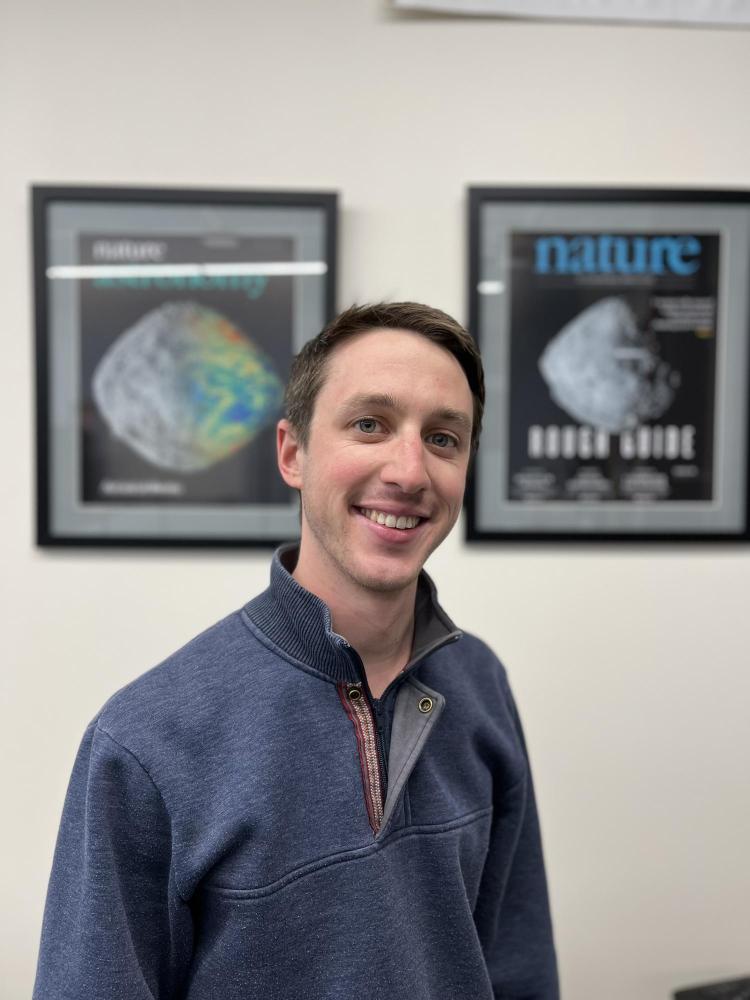Asteroids with CU Boulder Connections
Meyer is not the first person at CU Boulder to have an asteroid named after them! There are currently three other researchers in Smead Aerospace who also have the distinction:
Distinguished Professor Dan Scheeres
Associate Professor Jay McMahon
Research Associate Paul Sánchez

Above: Alex Meyer
Header Image: Diagram showing the orbital path of asteroid (33974) Alexmeyer.
PhD student played key role on NASA’s DART Mission
Alex Meyer is an astrodynamics expert, engineer, PhD student, and now, a part of the night sky. The International Astronomical Union has officially named an asteroid after him.
Asteroid 2000 ND17 is now (33974) Alexmeyer.
“It’s pretty cool and quite an honor,” Meyer said. “You look around at other asteroids and the people they’re named after; it’s very good company to be in.”
As a fifth year aerospace PhD student at the University of Colorado Boulder, Meyer is being recognized for fundamental research he conducted on the dynamics of binary asteroid systems and how they are affected by close planetary flybys.
His work is part of NASA's Double Asteroid Redirection Test (DART) mission, which in 2022 intentionally crashed a space probe into an orbiting binary asteroid to study deflection technology.
“Alex’s research was fundamentally relevant to the DART mission,” said Dan Scheeres, a distinguished professor of aerospace at CU Boulder and Meyer’s advisor.
Scheeres nominated Meyer for the naming honor.
“He played such a big role and the work he provided was really unique. He developed simulations on what would happen to this asteroid after the impact and provided advice on the science to other engineers,” Scheeres said.
The naming is made all the more impressive by the fact that Meyer’s contributions began somewhat unexpectedly.
“When I started at CU Boulder I was interested in orbital mechanics, but was playing around in a couple different areas of research. Then a more senior grad student who had responsibility with DART was leaving, and Dan asked if I could take over,” Meyer said.
He dove in with aplomb.
“Binary asteroids gave me the opportunity to work on cutting edge missions and I just kept finding new and interesting things to study,” Meyer said. “The dynamics of these binary systems can be quite complicated. Asteroids don’t look like spheres; they’re weird shapes and their orbits are quite close together. So the gravity between them becomes really complex.”
A personal ambition toward advanced research and analysis is what drove Meyer’s interest in graduate school and specifically CU Boulder.
“This is one of the best astrodynamics schools in the country, and being able to apply myself on these real world problems as a PhD student is a great opportunity. I was one of the main dynamicists on the mission,” Meyer said.
The research has become a key part of his PhD thesis. Meyer intends to graduate this summer and is currently at work on his dissertation. After graduation, he hopes to work full time in a research laboratory.
Meyer’s asteroid orbits as part of the asteroid belt between Mars and Jupiter. Approximately 7 km (4.35 mi) in diameter, it was originally spotted in 2000. It is possible to see with a large personal telescope, but it requires at least an 18” mirror, and so is best viewed from an observatory.
